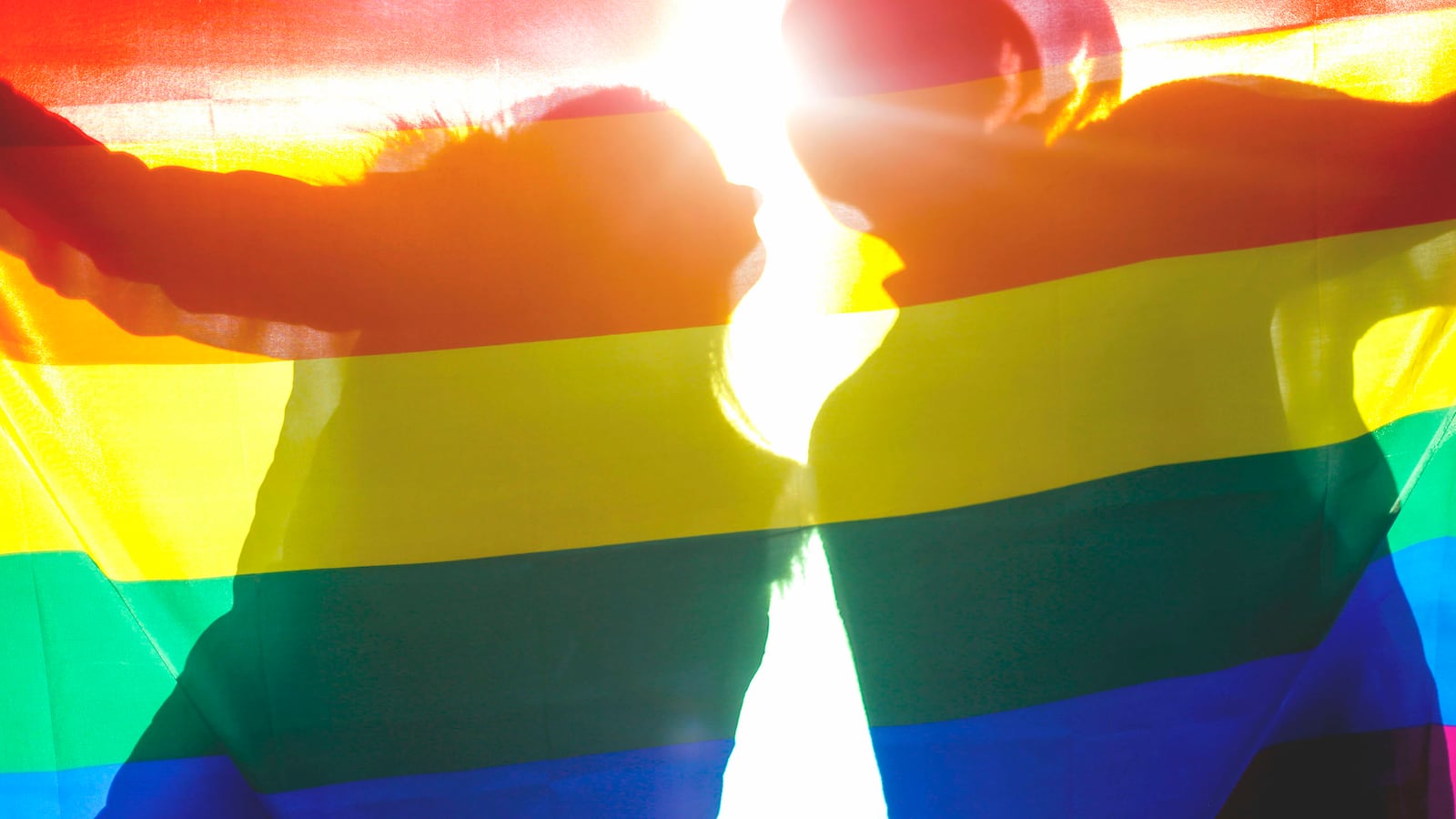The theory that LGBT acceptance in America will only ever increase over time is a reassuring one. The only problem is that it may not be true.
A new survey commissioned by the LGBT media-advocacy group GLAAD and conducted by The Harris Poll found that fewer non-LGBT adults reported being comfortable with their LGBT peers than in previous years.
This marks the first time in the four-year history of the Accelerating Acceptance report that GLAAD has witnessed a decline in LGBT acceptance.
“This year, the acceptance pendulum abruptly stopped and swung in the opposite direction,” GLAAD President and CEO Sarah Kate Ellis wrote in the 2018 report, noting the sharp contrast between this year’s results and the last three years of watching Americans report being “more comfortable with LGBTQ people and more supportive of LGBTQ issues.”
The annual GLAAD survey asks non-LGBT Americans to describe how comfortable they are in several scenarios involving LGBT people, like learning that a doctor is LGBT, witnessing a same-sex couple holding hands, or worshipping alongside an LGBT person at church.
This year’s version, conducted in November 2017, found “a decline with people’s comfort year-over-year,” not just in a few of the scenarios, but “in every LGBTQ situation.”
For example, in 2016, 27 percent of non-LGBT Americans said that they would be “very” or “somewhat” uncomfortable with learning that a family member is LGBT; in 2017, that figure jumped all the way up to 32 percent.
Similar increases in discomfort occurred across the other scenarios as well: For instance, 36 percent of non-LGBT Americans, up from 29 percent, said they would be “very” or “somewhat” uncomfortable seeing a same-sex couple hand-in-hand and 26 percent, up from 22 percent, said the same about having an LGBT person at their place of worship.
In many cases, this marks a return to the levels of acceptance GLAAD and The Harris Poll found back in 2014—a year before the nationwide legalization of same-sex marriage.
In 2014, for example, 27 percent of non-LGBT Americans said they would be “very” or “somewhat” uncomfortable looking at a wedding picture on an LGBT co-worker’s desk. The following year, that figure dipped to 25 percent. Now, it has returned to 27 percent.
“This change can be seen as a dangerous repercussion in the tenor of discourse and experience over the last year,” Ellis wrote. “2017 brought heightened rhetoric toward marginalized communities to the forefront of American culture.”
In particular, Ellis cited President Trump’s attempt to ban transgender troops from the military via Twitter, Mississippi’s anti-LGBT law HB 1523, and the fatal violence against transgender people across the country as evidence that anti-LGBT rhetoric and sentiment was on the rise in 2017.
After years of advances like the 2015 Obergefell decision and court rulings in favor of transgender rights, 2017 was indeed a step backward for LGBT Americans—and so it is perhaps unsurprising that 55 percent of LGBT respondents to the GLAAD survey reported experiencing discrimination based on their sexual orientation and gender identity in 2017, as compared to 44 percent who said the same in 2016.
The popular wisdom was that 2017 was a uniquely awful year for LGBT Americans; the Accelerating Acceptance report is one of the first tangible signs of how bad it has been.
Unfortunately, the GLAAD survey also found that non-LGBT Americans may not have supported LGBT people as vigorously as they did in previous years—although they still technically support equal rights for LGBT people by a wide margin.
The GLAAD survey sorts non-LGBT Americans into three broad categories based on their comfort level across the LGBT scenarios: “allies” who are “very” or “somewhat” comfortable with every scenario, “detached supporters” who vary in comfort based on the question, and “resisters” who report being “very” or “somewhat” uncomfortable in every situation.
The proportion of “resisters” has held steady at 14 percent of non-LGBT Americans since 2015, but the ratio of “allies” to “detached supporters” took a turn for the worse over the past year. Now, GLAAD counts 49 percent of the non-LGBT respondents as “allies,” down from 53 percent in 2016. Over that some time span, the percentage of “detached supporters” rose from 33 percent to 37 percent.
Those numbers are particularly disheartening in light of the fact that the percentage of non-LGBT Americans who reported being “strongly” or “somewhat” in favor of equal rights for LGBT people has remained static at 79 percent from 2016 into 2017. Recent public-opinion polling data from Gallup and the Pew Research Center also indicate that support for major pillars of LGBT equality, like same-sex marriage, remains high.
Even as non-LGBT Americans support full equality on paper, then, the increase in “detached supporters” suggests that their personal comfort level with LGBT people may have slipped somewhat over the past year.
But Ellis remains optimistic that despite the backslide that was 2017, LGBT people will still find “100 percent acceptance” over time.
“Forward progress ebbs and flows in every social-justice movement,” she wrote. “Progress for marginalized communities is a pendulum that swings in both directions, but ultimately lands on freedom.”






